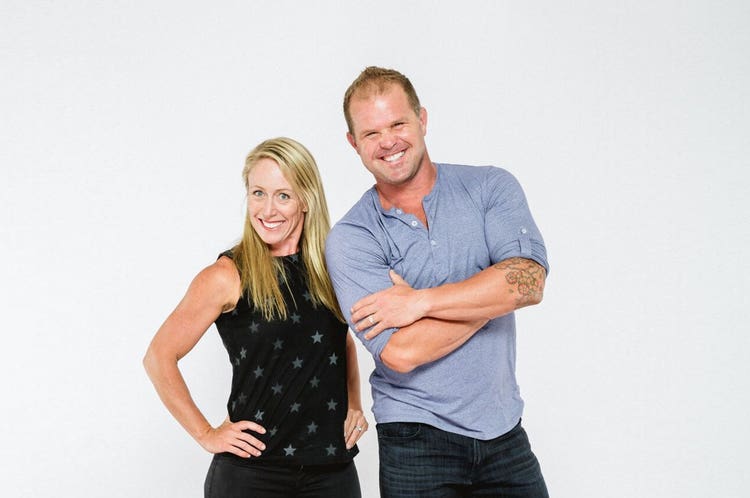Make a Move on Pain

Be consistent for long-term results, say Kelly and Juliet Starrett.
As we age, pain becomes a reality most of us learn to deal with. It comes with the territory, we reason, as it spreads from our lower back to our shoulders, knees, hips and every joint and muscle in between. This is not a reality we should accept, however, say Kelly and Juliet Starrett. And we can avoid it if we make the right choices.
The founders of MobilityWOD, a one-stop resource for improving performance, avoiding injury and resolving pain, say that feeling good physically is not reserved for those of a certain age or for people who train X amount of hours per week.
Kelly Starrett, a physical therapist, coach to elite and everyday athletes, and the author of the bestseller “Becoming a Supple Leopard,” says, “I can always improve someone’s athleticism. I can teach them in that context of training … to begin to have a conversation about what’s normal pain, and what’s not normal pain.”
The couple uses a mountain-climbing metaphor. Before you can climb the mountain, you have to make sure you have the essentials packed. “We’re here to remind people not to forget about the basics,” says Juliet Starrett, co-founder and CEO of MobilityWOD. If you’re not taking care of the basics, then attempting biohacks to improve your performance makes life “a circus.” And the Starretts are laser-focused on changing how we think about human movement and athletic performance.
Be consistent
The Starretts say that instead of taking on Herculean workouts, you should simply aim to be consistent. “Consistency is key to making changes and feeling better. Instead of being very heroic, we just want people to be consistent. You start turning the wrench a tiny bit. Over the long, long haul, you see massive change” without pain.
“If you manage to carve out an hour a day, that’s really extraordinary,” says Juliet. She adds that simple movement — whether it’s walking your kids to school, running a bit each day or just making sure you are on your feet more — is a good first step toward becoming more active and eventually, reaching goals and feeling better physically.
Kelly says that adding regular movement to your day helps to combat the toll that a sedentary lifestyle takes on your body. “We drive everywhere; we do a lot of sitting,” he says. So instead, “Juliet started a ‘walking school bus.’ Every morning, we have about 50 kids. We meet at the corner, and we walk the mile-and-a-quarter to school. But a lot of parents have joined on, and it’s been transformational for the parents because they’re actually moving more.”
Make movement sustainable
To achieve consistency, it’s important to have goals outside of the gym that make fitness a priority, rather than a New Years’ resolution that gets dropped as soon as life gets busy.
“Maybe it’s, ‘I want to look great for this wedding.’ Fine for me. ‘Hey, I really want to go do this hike.’ ‘Hey, my kid is playing baseball and I want to throw the ball and not hurt.’ But attaching context and meaning to why we go to the gym and work hard really makes it a sustainable practice,” says Starrett.
Move all the time
The Starretts also advocate moving all day — not just the hour or 30 minutes that you set aside for a workout. That’s why they promote standing desks for grownups and kids. “Just training an hour a day is not enough. You have to do as much movement as you possibly can throughout the day. That’s really going to often be the difference between sickness and health.”